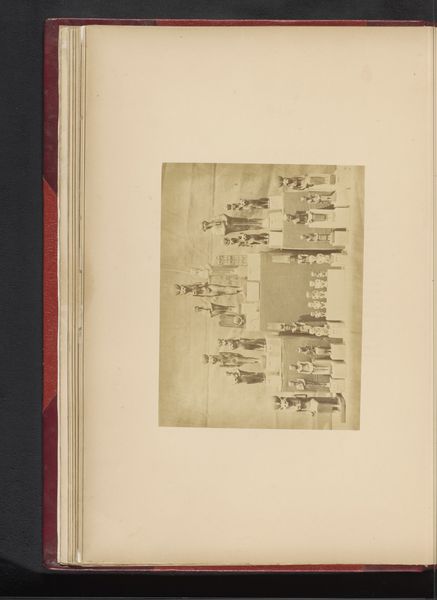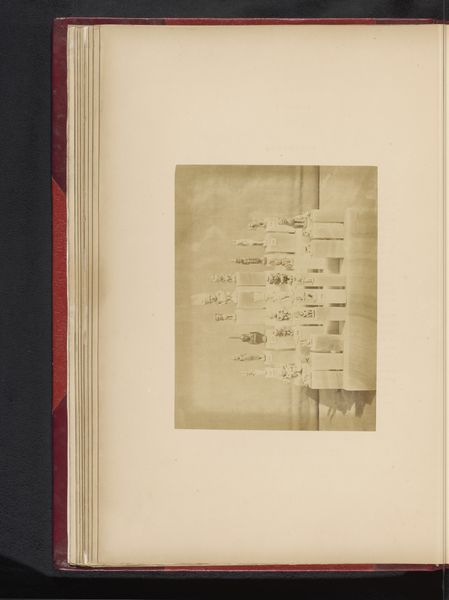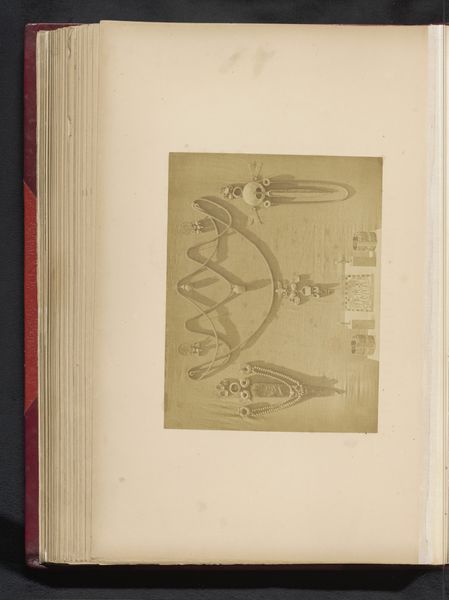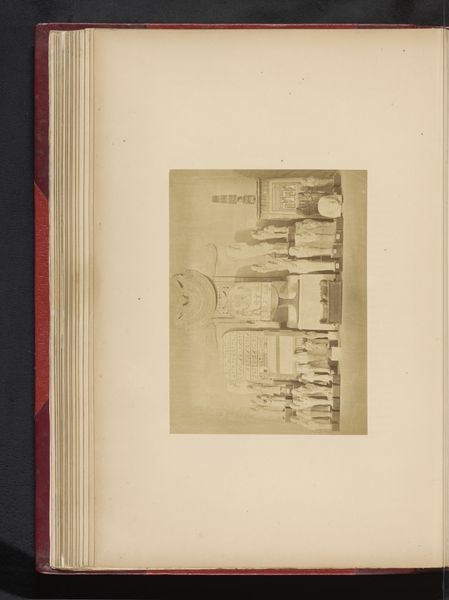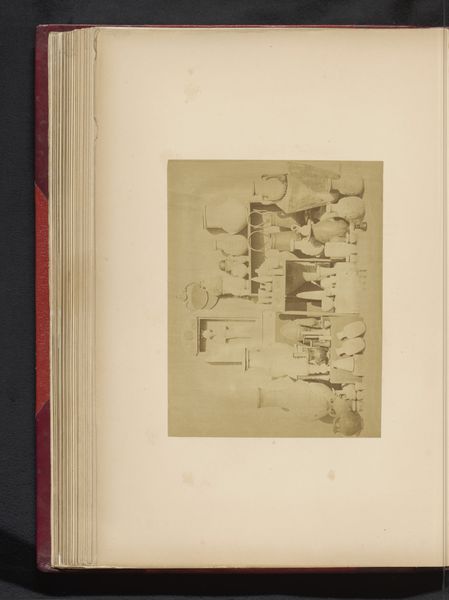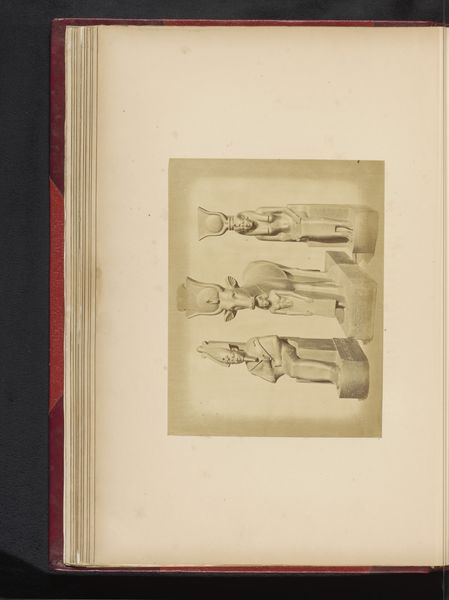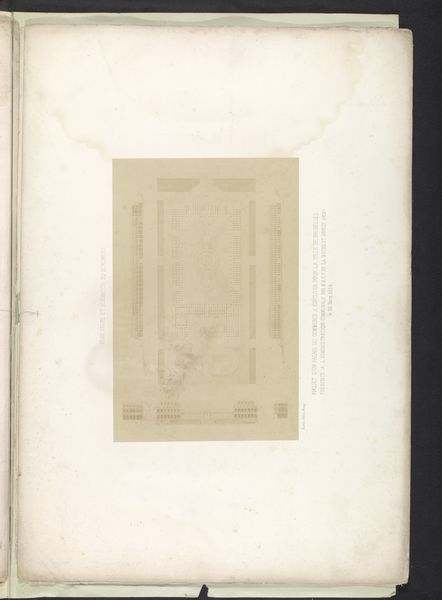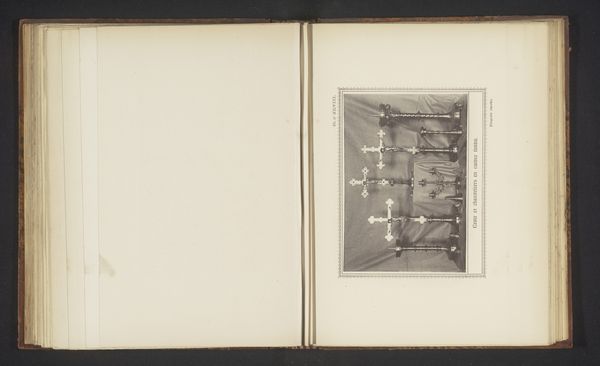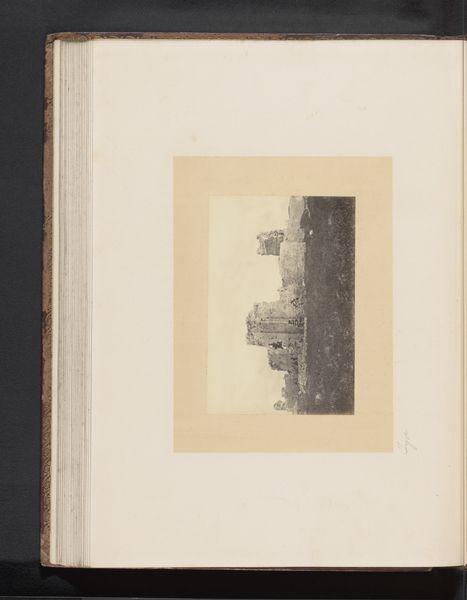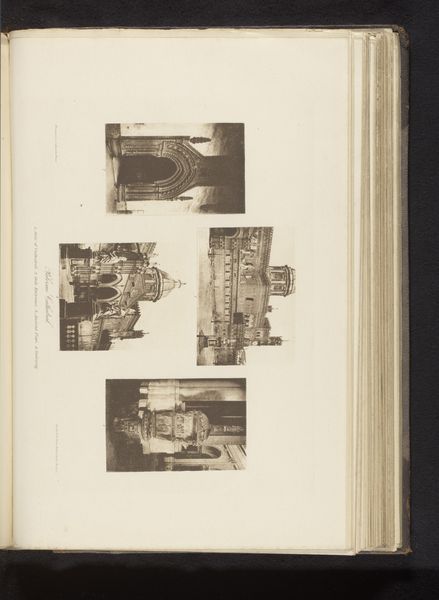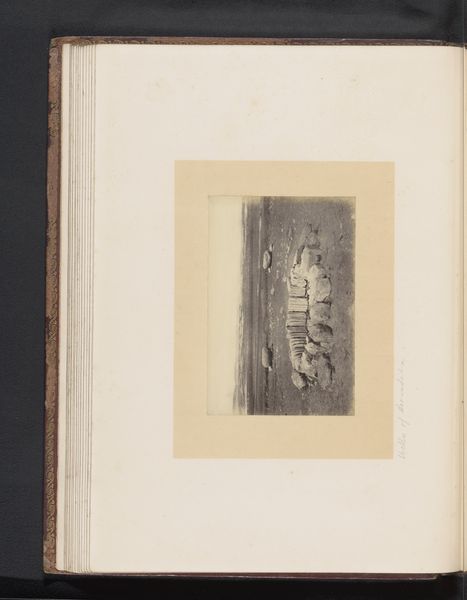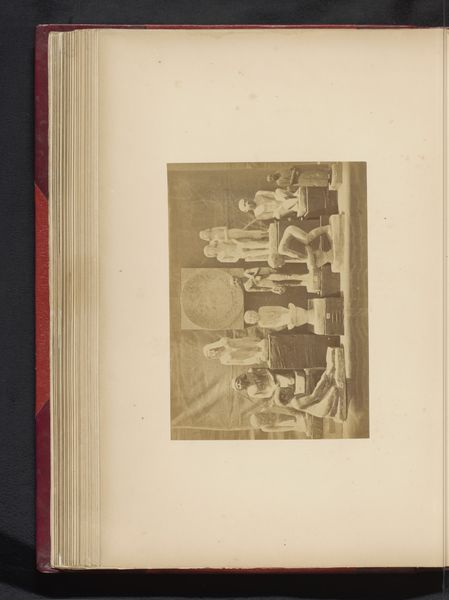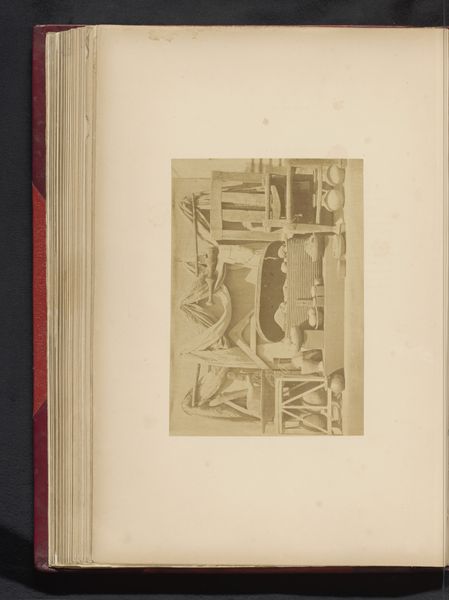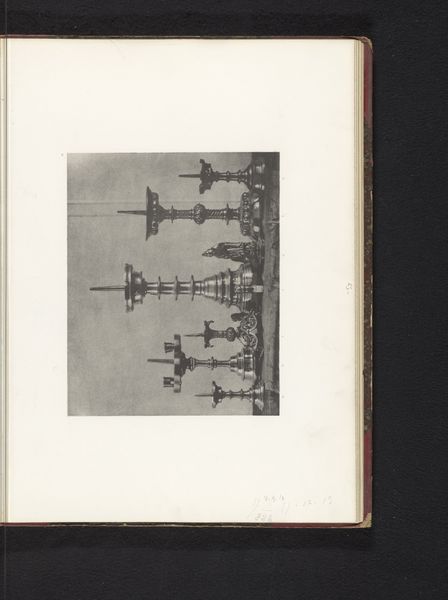
Beelden van Ka, Seb, Onoeris en andere Egyptische afgodsbeelden in het Boulaq Museum in Caïro, Egypte before 1871
0:00
0:00
drawing, paper, ink
#
portrait
#
drawing
#
ancient-egyptian-art
#
paper
#
ink
#
ancient-mediterranean
#
history-painting
Dimensions: height 183 mm, width 240 mm
Copyright: Rijks Museum: Open Domain
Editor: This ink drawing on paper, titled "Beelden van Ka, Seb, Onoeris en andere Egyptische afgodsbeelden in het Boulaq Museum in Caïro, Egypte", was created by Hippolyte Délié before 1871. It depicts several ancient Egyptian statues, but its monochrome palette lends it a somewhat subdued and archival feeling. What strikes you most about this piece? Curator: Well, for me, the real story lies in the image’s production, the artist's labor. Think about the circumstances: Délié, a 19th-century artist, meticulously rendering these artifacts. What kind of access did he have? Was this a commissioned work? Editor: I see what you mean. How might his process influence our reading of the image today? Curator: Massively. Délié’s choice of ink and paper places him within a specific historical moment of art production, doesn't it? Unlike the original makers who worked with stone or precious metals to signify the Gods depicted in those sculptures, here it's all translated through readily available and comparatively 'cheap' materials. This image highlights not only the original ancient artworks but also the processes of reproduction and distribution of knowledge about Egyptian culture in the 19th century. Editor: That’s a great point. So, instead of just seeing ancient gods, we also see 19th-century artistic practice. Curator: Exactly! It’s about understanding the layers of production – from the ancient sculptors to Délié, and now even ourselves as we analyze it today. The materiality of art objects connects to so many different systems of knowledge and labor, which we see materialized here. Editor: I hadn't considered how much the medium influences the meaning! It encourages us to look beyond just the depicted subject. Curator: Precisely. Examining materiality can reveal fascinating insights that traditionnal narratives miss. Editor: I’ll definitely be thinking about material and process more critically in the future. Curator: It's key, and a powerful approach!
Comments
No comments
Be the first to comment and join the conversation on the ultimate creative platform.
